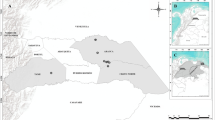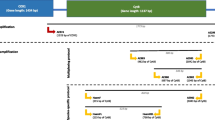Abstract
Haemosporidia infections may cause major damage to avian populations and represent a concern for veterinarians working in zoological parks or wildlife rescue centres. Following the fatal infection of 9 Great grey owls (Strix nebulosa) at Mulhouse zoological park, between summer 2013 and 2015, a prospective epidemiological investigation was performed in captive strigiform birds in France in 2016. The purpose was to evaluate the prevalence of haemosporidian parasites in captive Strigiformes and to estimate the infection dynamics around the nesting period. Blood samples were taken from 122 strigiform birds representing 14 species from 15 French zoological parks. Parasites were detected by direct examination of blood smears and by PCR targeting the mitochondrial cytochrome b gene. Haemosporidian parasites were detected in 59 birds from 11 zoos. Three distinct Haemoproteus mitochondrial cytochrome b sequences (haplotypes A and C for H. syrnii and haplotype B for Haemoproteus sp.) as well as two species of Plasmodium were detected. The overall prevalence of Haemoproteus infection was 12.8%. The percentage of birds infected by Haemoproteus varied according to the period of sampling. Nesting season seemed to be at greater risk with an average prevalence of 53.9% compared with winter season with an average prevalence of 14.8%, related to the abundance of the vectors. The prevalence of Plasmodium infection in Strigiformes did not exceed 8% throughout the year. This study confirmed how significant Haemosporidia infection could be in Strigiformes from zoological parks in France. The nesting season was identified as a period of higher risk of infection and consequently the appropriate period to apply prophylactic measures.


Similar content being viewed by others
References
Baker KC, Rettenmund CL, Sander SJ, Rivas AE, Green KC, Mangus L, Bronson E (2018) Clinical effect of hemoparasite infections in snowy owls (Bubo scandiacus). J Zoo Wildl Med 49:143–152
Bukauskaitė D, Žiegytė R, Palinauskas V, Iezhova TA, Dimitrov D, Ilgūnas M, Bernotienė R, Markovets MY, Valkiūnas G (2015) Biting midges (Culicoides, Diptera) transmit Haemoproteus parasites of owls: evidence from sporogony and molecular phylogeny. Parasit Vectors 8:303
Earle RA, Bastianello SS, Bennett GF, Krecek RC (1993) Histopathology and morphology of the tissue stages of Haemoproteus columbae causing mortality in Columbiformes. Avian Pathol 22:67–80
Evans M, Otter A (1998) Fatal combined infection with Haemoproteus noctuae and Leucocytozoon ziemanni in juvenile snowy owls (Nyctea scandiaca). Vet Rec 143:72–76
Ferrell ST, Snowden K, Marlar AB, Garner M, Lung NP (2007) Fatal hemoprotozoal infections in multiple avian species in a zoological park. J Zoo Wildl Med 38:309–316
Forrester DJ, Greiner EC (2008) Leucocytozoonosis. In: Parasitic diseases of wild birds, Atkinson CT, Thomas NJ, Hunter BD (eds.), Wiley-Blackwell, Ames, Iowa, pp 54-107.
Grilo ML, Vanstreels RET, Wallace R, García-Párraga D, Braga EM, Chitty J, Catão-Dias JL, Madeira de Carvalho LM (2016) Malaria in penguins – current perceptions. Avian Pathol 45:393–407
Guindon S, Dufayard JF, Lefort V, Anisimova M, Hordijk W, Gascuel O (2010) New algorithms and methods to estimate maximum-likelihood phylogenies: assessing the performance of PhyML 3.0. Syst Biol 59(3):307–321
Harasym CA (2008) West Nile virus and hemoparasites in captive snowy owls (Bubo scandiacus) — management strategies to optimize survival. Can Vet J 49(11):1136–1138
Hellgren O, Waldenström J, Bensch S (2004) A new PCR assay for simultaneous studies of Leucocytozoon, Plasmodium, and Haemoproteus from avian blood. J Parasitol 90:797–802
Karadjian G, Puech M-P, Duval L, Chavatte J-M, Snounou G, Landau I (2013) Haemoproteus syrnii in Strix aluco from France: morphology, stages of sporogony in a hippoboscid fly, molecular characterization and discussion on the identification of Haemoproteus species. Parasite 20:32
Karadjian G, Martinsen E, Duval L, Chavatte JM, Landau I (2014) Haemoproteus ilanpapernai n. sp. (Apicomplexa, Haemoproteidae) in Strix seloputo from Singapore: morphological description and reassignment of molecular data. Parasite 21:17
Krone O, Waldenström J, Valkiūnas G, Lessow O, Müller K, Iezhova TA, Fickel J, Bensch S (2008) Haemosporidian blood parasites in European birds of prey and owls. J Parasitol 94:709–715
Kumar S, Stecher G, Tamura K (2016) MEGA7: molecular evolutionary genetics analysis version 7.0 for bigger datasets. Mol Biol Evol 33:1870–1874
Lloyd JE (2002) Louse flies, keds, and related flies (Hippoboscoidea). In: Medical and Veterinary Entomology. Mullen GR, Durden LA (eds.), Elsevier Science, San Diego, CA, pp 349–362
Marks J, Cannings RJ, Mikkola H (1999) Family Strigidae (Typical Owls). In: Handbook of the Birds of the World – Vol. 5. del Hoyo J, Elliott AD, Sargatal J (eds), Lynx Editions, Barcelona, pp 76-242
Marzal A, de Lope F, Navarro C, Moller AP (2005) Malarial parasites decrease reproductive success: an experimental study in a passerine bird. Oecologia 142:541–545
Mutlow A, Forbes N (2000) Haemoproteus in raptors: pathogenicity, treatment and control. Proceedings of the Association of Avian Veterinarians. pp 157-163
Olsen GH, Gaunt SD (1985) Effect of hemoprotozoal infections on rehabilitation of wild raptors. J Am Vet Med Assoc 187(11):1204–1205
Pacheco MA, Matta NE, Valkiunas G, Parker PG, Mello B, Stanley CE Jr, Lentino M, Garcia-Amado MA, Cranfield M, Kosakovsky Pond SL, Escalante AA (2018) Mode and rate of evolution of Haemosporidian mitochondrial genomes: timing the radiation of avian parasites. Mol Biol Evol 35(2):383–403
Pearson GL (2001) Field manual of wildlife diseases: general field procedures and diseases of birds. J Wildl Dis 37:193–200
Ricklefs RE, Fallon SM (2002) Diversification and host switching in avian malaria parasites. Proc R Soc B Biol Sci 269:885–892
Valkiunas G (2005) Avian malaria parasites and other Haemosporidia. CRC Press, New York, pp 932
Valkiunas G, Ilgūnas M, Bukauskaitė D, Fragner K, Weissenböck H, Atkinson CT, Iezhova TA (2018) Characterization of Plasmodium relictum, a cosmopolitan agent of avian malaria. Malar J 17(1):184
van Rooyen J, Lalubin F, Glaizot O, Christe P (2013) Avian haemosporidian persistence and co-infection in great tits at the individual level. Malar J 12:40
Acknowledgements
We are grateful to the veterinarians from all the French zoological parks who participated in this study. We thank the bird section staff of Mulhouse zoo for their technical assistance. We thank Karin Lemberger for her help with the histopathology. We would also like to thank the Association Française des Vétérinaires de Parcs zoologiques (AFVPZ) for financial support (Grant 2016).
Author information
Authors and Affiliations
Corresponding author
Ethics declarations
Conflict of interest
The authors declare that they have no conflict of interest.
Additional information
Section Editor: Nawal Hijjaw
Publisher’s note
Springer Nature remains neutral with regard to jurisdictional claims in published maps and institutional affiliations.
Rights and permissions
About this article
Cite this article
Giorgiadis, M., Guillot, J., Duval, L. et al. Haemosporidian parasites from captive Strigiformes in France. Parasitol Res 119, 2975–2981 (2020). https://doi.org/10.1007/s00436-020-06801-5
Received:
Accepted:
Published:
Issue Date:
DOI: https://doi.org/10.1007/s00436-020-06801-5




